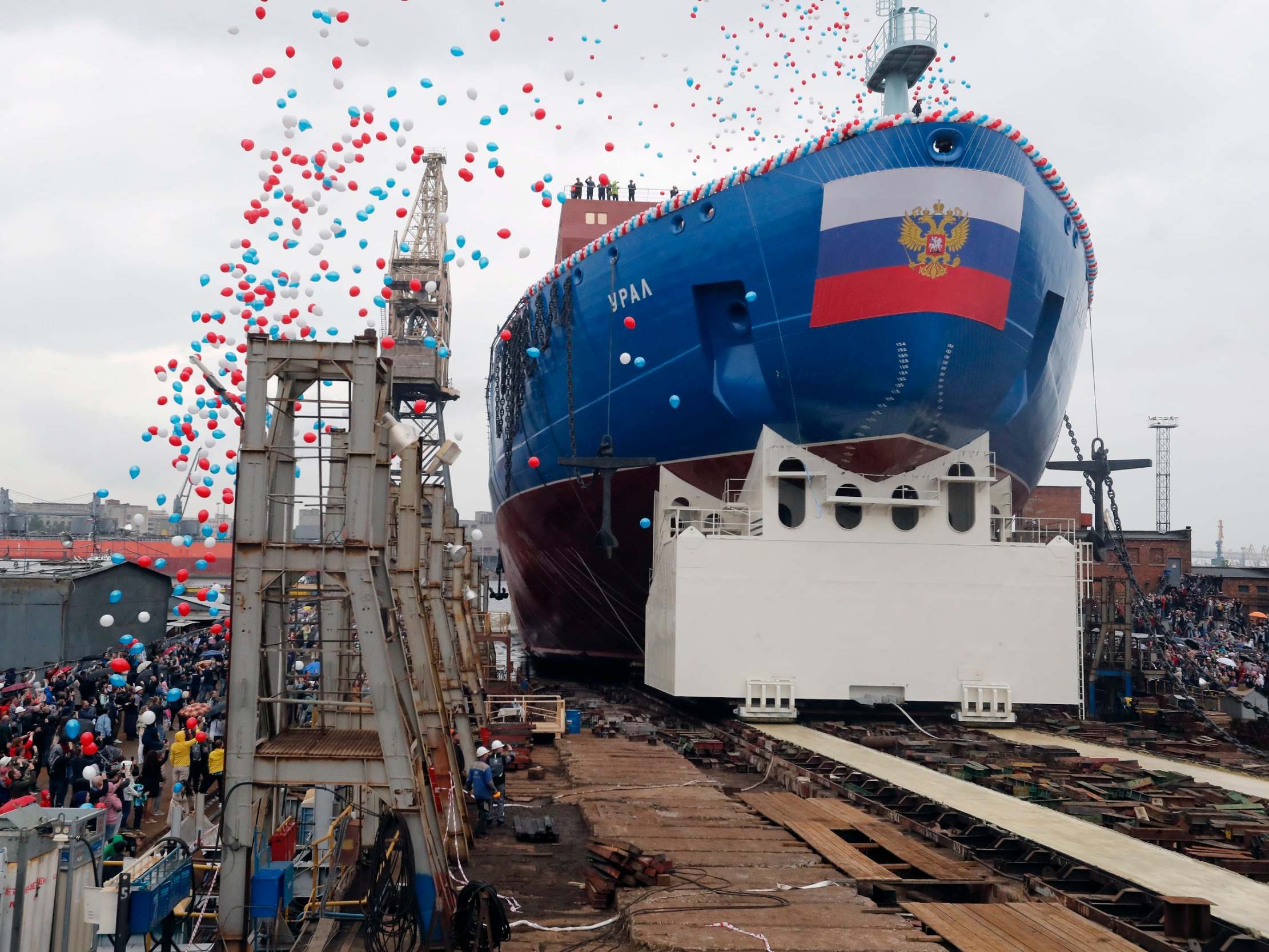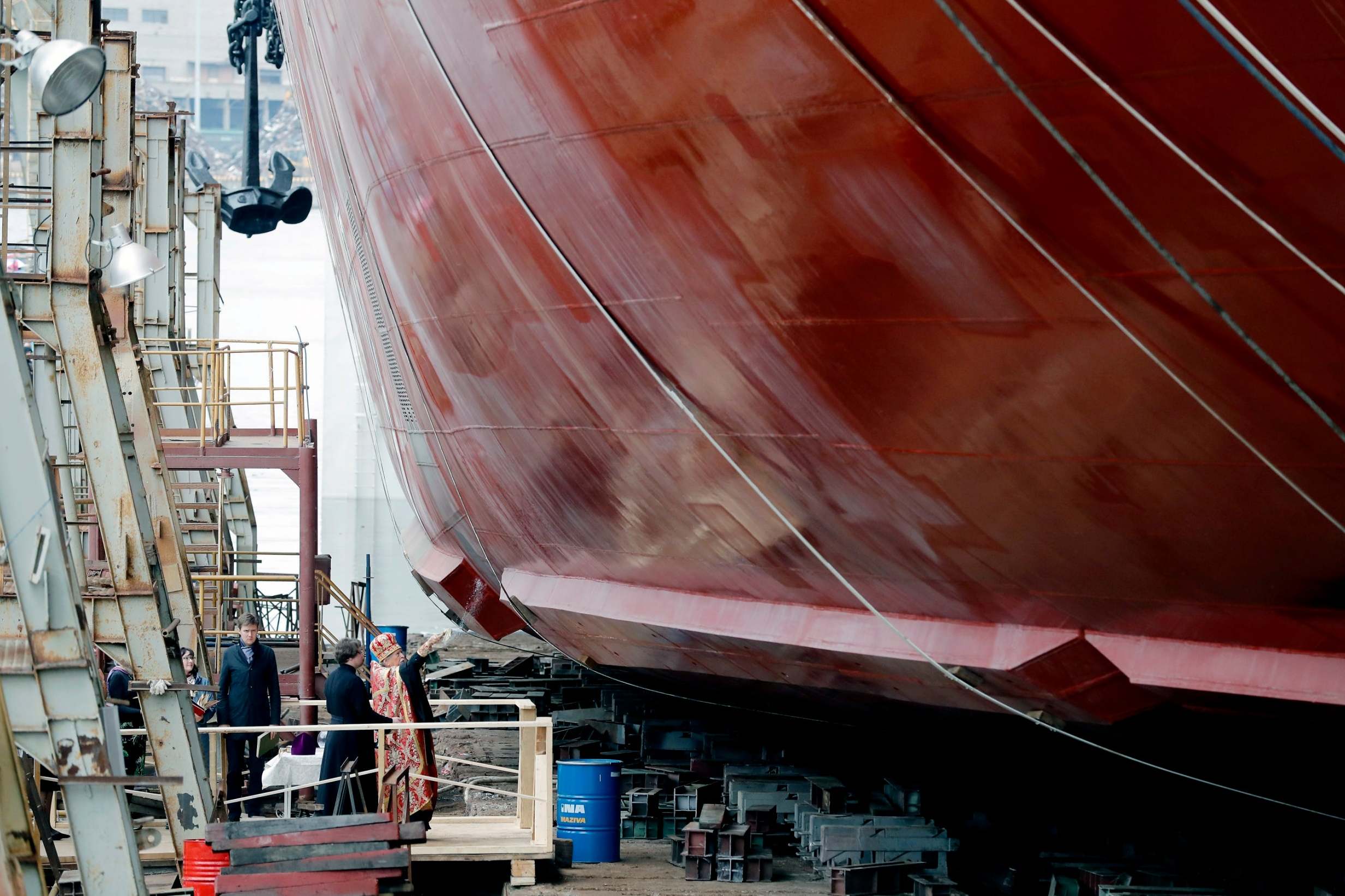Russia launches world’s largest nuclear-powered icebreaker to open up Arctic shipping routes
Rapid decline of sea ice also presents prospect of easier access to enormous oil and gas reserves

Your support helps us to tell the story
From reproductive rights to climate change to Big Tech, The Independent is on the ground when the story is developing. Whether it's investigating the financials of Elon Musk's pro-Trump PAC or producing our latest documentary, 'The A Word', which shines a light on the American women fighting for reproductive rights, we know how important it is to parse out the facts from the messaging.
At such a critical moment in US history, we need reporters on the ground. Your donation allows us to keep sending journalists to speak to both sides of the story.
The Independent is trusted by Americans across the entire political spectrum. And unlike many other quality news outlets, we choose not to lock Americans out of our reporting and analysis with paywalls. We believe quality journalism should be available to everyone, paid for by those who can afford it.
Your support makes all the difference.Russia launched the world’s largest nuclear-powered icebreaker on Saturday as the country responds to the commercial opportunities presented by melting Arctic sea ice.
Amid warming winters and rapid loss of sea ice cover, Russia is preparing for more shipping via what it calls the Northern Sea Route (NSR), which is expected to soon become navigable year-round.
The ship, named the Ural, was floated out at a dockyard in St Petersburg and is one of a trio of new vessels which will be the largest and most powerful fleet of icebreakers in the world.
It will eventually be handed over to Russia’s state-owned nuclear energy corporation Rosatom in 2022, when the other two icebreakers – the Arktika and the Sibir – also enter service.
The Arktika was floated in 2016.
“The Ural together with its sisters are central to our strategic project of opening the NSR to all-year activity,” Alexey Likhachev, Rosatom’s chief executive, was quoted saying.
President Vladimir Putin said in April Russia was stepping up construction of icebreakers with the aim of significantly boosting freight traffic along its Arctic coast.
The drive is part of a push to strengthen Moscow’s hand in the high north as it vies for dominance with traditional rivals Canada, the United States and Norway, as well as China.
By 2035, Mr Putin said Russia’s Arctic fleet would operate at least 13 heavy-duty icebreakers, nine of which would be powered by nuclear reactors.

The Arctic holds oil and gas reserves equivalent to 412 billion barrels of oil, about 22 per cent of the world’s undiscovered oil and gas, the US Geological Survey estimates.
Moscow hopes the route which runs from Murmansk to the Bering Strait near Alaska could become increasingly popular as it cuts sea transport times from Asia to Europe.
Levels of sea ice have consistently declined in the Arctic – the part of the world most rapidly warming.
The 5.04 million sq miles of ice in the Arctic was 525,000 sq miles below the 1981-to-2010 ice cover average, making January 2019 the lowest on record, according to the US National Snow and Ice Data Centre (NSIDC).
In 2018, Russia sent the first ship through the Northern Sea Route without an icebreaker in winter. Mr Putin called this a “big event in the opening up of the Arctic”.
Additional reporting by Reuters
Join our commenting forum
Join thought-provoking conversations, follow other Independent readers and see their replies
Comments